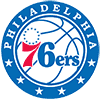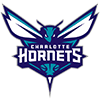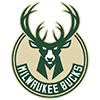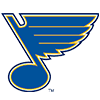There are a number of outstanding players in the Arizona Fall League that I won't have the time and space to profile. I will try to mention some of those players in next week's final Fall League column.
It's amazing how prospects predicted to succeed in professional baseball have been able to show their skills as the league has progressed. There is no substitution for talent. Gimmicks won't work for pitchers trying to get big league hitters out. Changing one's swing from at-bat to at-bat won't convert a mediocre hitter to a major league player. The cream in the Arizona Fall League is rising to the top.
Let's take a look at some interesting prospects:
Jeremy Jeffress, RHP, MIL – In the Rising Stars game, Jeffress hit 101 miles per hour on the radar gun. There was an audible buzz in the park when the scoreboard lit up "01." Of even greater importance is the fact that he's finding his command and he has looked better as the season progressed.
Imagine hitting a pitch that comes in at 101. Regardless of how confident the batter is, that type of velocity gives even the best hitters jello legs. Why wouldn't it?
Jeffress has closer stuff.
From what I have seen in the AFL, Jeffress still has work to do on bringing the ball to the strike zone more consistently. The fact he has a repertoire that includes a mediocre (at best) curveball and a below average changeup helps keeps hitters
There are a number of outstanding players in the Arizona Fall League that I won't have the time and space to profile. I will try to mention some of those players in next week's final Fall League column.
It's amazing how prospects predicted to succeed in professional baseball have been able to show their skills as the league has progressed. There is no substitution for talent. Gimmicks won't work for pitchers trying to get big league hitters out. Changing one's swing from at-bat to at-bat won't convert a mediocre hitter to a major league player. The cream in the Arizona Fall League is rising to the top.
Let's take a look at some interesting prospects:
Jeremy Jeffress, RHP, MIL – In the Rising Stars game, Jeffress hit 101 miles per hour on the radar gun. There was an audible buzz in the park when the scoreboard lit up "01." Of even greater importance is the fact that he's finding his command and he has looked better as the season progressed.
Imagine hitting a pitch that comes in at 101. Regardless of how confident the batter is, that type of velocity gives even the best hitters jello legs. Why wouldn't it?
Jeffress has closer stuff.
From what I have seen in the AFL, Jeffress still has work to do on bringing the ball to the strike zone more consistently. The fact he has a repertoire that includes a mediocre (at best) curveball and a below average changeup helps keeps hitters off balance, but those secondary pitches are still works in progress. They are both sub-standard at this point. However, maybe he only needs the heat of that fastball to work the ninth inning to be a viable closer option. But it would certainly help to vary velocity from his normal 95 to 85 with a changeup that he didn't telegraph. His arm action on his changeup is far different than on his fastball, giving the pitch away to the hitter.
Let me get this out of the way about Jeffress. He has been caught for using an "illegal substance" three times in the minor leagues. He was suspended for 100 games. That substance is said to be marijuana. Hopefully, that is now behind him, because he came very close to seeing his professional baseball career end for repeated drug use.
I see the possibility of Jeffress being in the Brewers' bullpen as early as this coming season. If that happens, he may move in as a setup man initially and ultimately, become their closer. Don't sleep on him.
Jason Kipnis & Cord Phelps, INF, CLE – In their desire to improve the quality of their product, the Indians have been searching for both second- and third-base help.
The Indians' 40-man roster has a few less than exciting players including Jayson Nix, Jason Donald, and Luis Valbuena from which to fill those positions, but none of them inflate the opponent's fear factor. Clearly, Lonnie Chisenhall is considered the third baseman of the future. However, the Indians feel he needs additional defensive development. Jared Goedert is another name being discussed as having major league potential. Not unlike Chisenhall, Goedert may not be ready with a finished major league skill set.
Enter Kipnis and Phelps. Both are legitimate prospects in the Cleveland organization playing in the Arizona Fall League where Phelps is playing third and Kipnis is playing second. Both are playing fairly well. Kipnis is hitting .271, but he has shown recent improvement at the plate. He was below .200 not long ago. Phelps has hit very well the entire fall and is batting .384.
To be fair, Kipnis is sharing time at second with Dustin Ackley, who is just tearing up the AFL (see profile below.) Even with the presence of Ackley there are enough at-bats for Kipnis.
Kipnis has a knack of putting the bat on the ball. He doesn't always hit in the best of luck. That is, he has hit some darts in the AFL that have found defensive gloves. He has only stuck out eight times in 71 at-bats. He's also hit three homers and driven in 18 runs, but he's only walked five times. He has an on-base percentage of .324. Kipnis has shown outstanding improvement in his offense and defense since the beginning of the Fall League . He should carry the improvement and skill set over to spring training.
Kipnis is still learning to play second. He played center field in college at Arizona State University and really made a name for himself in the 2009 College World Series.
The Indians have a glaring need for a louder bat than Valbuena at second base, so Kipnis is learning on the job. Defensively, he doesn't have tremendous range (especially to his right, non-glove side) but he is improving. It is his bat that has to play if he's going to be considered as a late 2011 option for the Tribe.
There is reason for optimism regarding Kipnis because he has completed two seasons of minor league baseball without ever hitting below .300. In 629 at-bats over between Single- And Double-A, Kipnis is hitting .307 with 17 homers and 93 RBI. He's also stolen 12 bases.
One of the best qualities Kipnis brings to his game is intensity – he is always in the game and gives 100 percent effort. He wants to succeed, and I think he will. It may be as soon as late 2011 if the Indians still can't fill their second base position with a viable big league bat that can play day in and day out against major league pitching.
Phelps is having an outstanding fall as well. His batting average is among the league leaders and he has three homers and 10 RBI, but he makes things happen at the plate (71 at-bats) and on the bases where he's 4-for-5 on stolen-base attempts.
While Phelps has played second base in the past, he is pretty much a fixture at third for the Peoria Javelinas in the AFL, but I'm sure the Tribe haven't ruled Phelps out as a second-base option going forward. Fortunately, he has looked fairly comfortable playing third this fall.
Phelps is coming off a season at Columbus in the International League where he hit .317 during a 66-game stint at Triple-A and .296 over 53 games at Double-A Akron. So, we have seen that he can progress to hit better pitching as he has now played Double-A, Triple A, and the AFL with good contact and successful batting averages.
The problem? Phelps doesn't have the power most teams seek in corner infielders. In 2010 he hit only eight homers at his two levels of play. He knocked in 54 runs. Again, those numbers would work well at second base.
The Tribe is so weak at the hot corner that playing time for Phelps at third during the Arizona Fall League is time well spent.
While neither Kipnis nor Phelps show power to crack open a baseball game, they both provide the ability to make contact and put the ball in play. Given the Indians' penchant for striking out in the past few seasons, contact hitters should be highly prized. Especially if they can hit the gaps and drive in runs – and both of them can.
Dustin Ackley, 2B, SEA – That perpetual smile is coming from Mariners general manager Jack Zduriencik. He's also breathing a big sigh of relief.
What to say about Ackley? Those who have followed my columns realize that I haven't been a big fan of hishitting mechanics. That's probably understating my past view.
This is a different Dustin Ackley this year than the young man we saw in last year's AFL and at the Mariners' spring training camp. That Ackley couldn't buy a hit. He looked totally off balance and confused at the plate. He looked like he was still hitting with an aluminum bat, and like he was guessing on every pitch and his footwork at the plate was totally messed up. Scouts were almost unanimous in wondering why the Mariners spent their first draft pick on Ackley.
This year's edition of Ackley is a refined, much more mechanically sound hitter. The ball is jumping off his bat. He is using the entire field and taking pitches where they are thrown. Guessing at the plate seems to be a thing of the past. He is hitting line drives all over the ballpark and the ball is coming off his bat with that special sound. Ackley is a wonderful tribute to player development. Staff must have worked long and hard refining his techniques at the plate.
Ackley has worked hard to move closer to realizing the huge upside that landed him as the No. 2 overall selection in the 2009 first-year player draft. He was an outstanding college hitter at North Carolina. Many, including the Mariners, thought he was simply too good a hitter to pass up, but he didn't have a true position to play. Initially he didn't show the skill set scouts and team officials thought he possessed. That was then. This is now.
There is no doubt in my mind that Ackley will be named the AFL Most Valuable Player for 2010. Here are his numbers heading to the final week of the season; .426 (on 26-for-61), four homers and 17 RBI. He has walked 23 times and maintained an OBP of .576 while his OPS is a whopping 1.331.
No, I don't think he'll hit .400 for the Mariners. Ackley is using his entire body now in his approach at the plate. Last year, I saw a hitter that used his hands only to create force through the ball. But if he keeps his attention focused on shifting his weight properly at the plate, keeping his swing short and measured and getting the barrel of the bat on the ball without guessing at pitches, Ackley will be starting at second base for the Seattle club when they break camp this spring. If not then, certainly later in the season, but he'll be arriving quickly and you shouldn't sleep on him either.
Kam Mickolio, RP, BAL – I remember it like it was yesterday. I was a scout for the Mariners and our club was looking for "the final piece the puzzle" to win our division. That final piece was identified as Erik Bedard. So, the club traded George Sherrill, Chris Tillman, Adam Jones, Tony Butler and Kam Mickolio to the Orioles for Bedard. I can't even write any more about it without getting a headache and sick to my stomach.
Mickolio was not the centerpiece of the trade. Jones and Sherrill were the main pieces with the potential of Tillman close behind. But our scouts, including yours truly mourned the loss of Mickolio.
If size matters, Mickolio is your guy. Try 6-foot-9 and 255 pounds of right-handed pitcher bearing down on the hitters. That's Mickolio. He throws a high 90's fastball and a wicked slider, keeps the ball down, and can induce ground balls as well as strike out hitters.
As a member of the Orioles' pitching staff, he's in the right place at the right time. The Orioles need bullpen help, and Mickolio is positioned to either set up or even close. He just has to continue to develop his mechanics by repeating his delivery and being economical coming out of the bullpen. Translation: he has to throw strikes or induce ground balls.
Here are Mickolio's numbers in the AFL going into the final week:
He has pitched six games out of the bullpen covering 12 innings. He has given up nine hits and one earned run. He has walked two and struck out 18. Opponents are hitting .205 against him. Keep in mind that the AFL is a hitter's league. Mickolio is a pitcher on the rise in an organization looking for pitching, and he is a back end of the bullpen guy to target as a late round sleeper in upcoming fantasy drafts.
Austin Romine, C, NYY – Lots of people are wondering what the Yankees will do with the catching position in 2011. It doesn't look like Jorge Posada will get as much playing time behind the plate. Posada's skills have eroded considerably, but his bat is still potent. Yankee plans appear to have Posada becoming a full-time designated hitter.
The Yankees have a tremendous hitting prospect waiting to be promoted to the big leagues in their top prospect, Jesus Montero. However, Montero comes with flawed defensive ability. He is seen as rather stiff and lacking mobility behind the plate. His arm strength is not major league average and his footwork still needs attention. There is no disagreement regarding his bat. He can hit. There are comparisons of Montero to Mike Piazza. That wouldn't be too shabby.
That leaves Francisco Cervelli. His problem is the opposite of Montero's. He can play defense, but his offense is weak.
Unless the Yankees elect to bring in someone with fading offensive skills and good defense (a Bengie Molina type) the club could turn to Romine, another highly rated catching prospect.
Romine can probably be counted upon to hit in the range of .250 with a few home runs and a fair amount of runs batted in. Actually, I've seen some long swings by Romine and they are of concern. Perhaps he thinks he has more power than we have seen to date. However, Romine is not an automatic out. From what I have seen of Romine at the plate, he generally puts the ball in play and he knows the strike zone. So far this fall he has struck out only 12 times in 56 plate appearances. That isn't bad, but he only has three walks and that's a concern. Yankee hitters have been known to see some pitches each at bat. However, that concept seemed to change towards the end of the season this year.
Romine got 455 at-bats for Double-A Trenton in the Eastern League in 2010.
He hit .286 with nine homers and 57 RBI. He also struck out 94 times while walking 37 times in 115 games. Romine has three full seasons of professional baseball at the minor league level. He may not be quite ready for prime time.
All things considered, of the catchers in the AFL, Romine looks the closest to being ready for a big league catching role, even with only three seasons under his belt. He has good receiving skills, seems to shepherd his pitchers along in the game and he makes defensive plays with natural ability. He has work to do on blocking balls in the dirt, perhaps the toughest part of catching big league pitchers. His bat should probably play.
Through the middle of the last week of the AFL Romine is hitting .286 with no homers and seven RBI. The power may improve with age and maturity. However, he isn't known as a power hitter.
It's safe to watch Romine as a prospect catcher for the Yankees unless they find that mature, aging yet reliable catcher. That's what makes Romine a risky draft choice early in the fantasy drafting season. However, by the time spring training is well underway, we should know what role Romine will play with the club.
FALL LEAGUE SCRIBBLES
- AFL pitching staffs are so worn down that the games Tuesday and Thursday in Week 6 are only seven innings.
- Bryce Harper is hitting .323 covering 31 at-bats playing only Wednesday and Saturday as a Taxi Squad member.
- Reds catching prospect Devin Mesoraco leads the AFL with nine passed balls. He hasn't looked good at all behind the plate. Romine has five.
- Cardinals pitcher Chris Carpenter and Rangers third baseman Michael Young were inducted into the AFL Hall of Fame this season.
PLAYERS OF THE WEEK-(WEEK 5) AS SELECTED BY THE STAFF:
Kris Negron, INF, CIN
Eric Hurley, P, TEX
NEXT WEEK: Brief sketches of important players not profiled as yet as well as my estimate of Ready For Prime Time players.


























